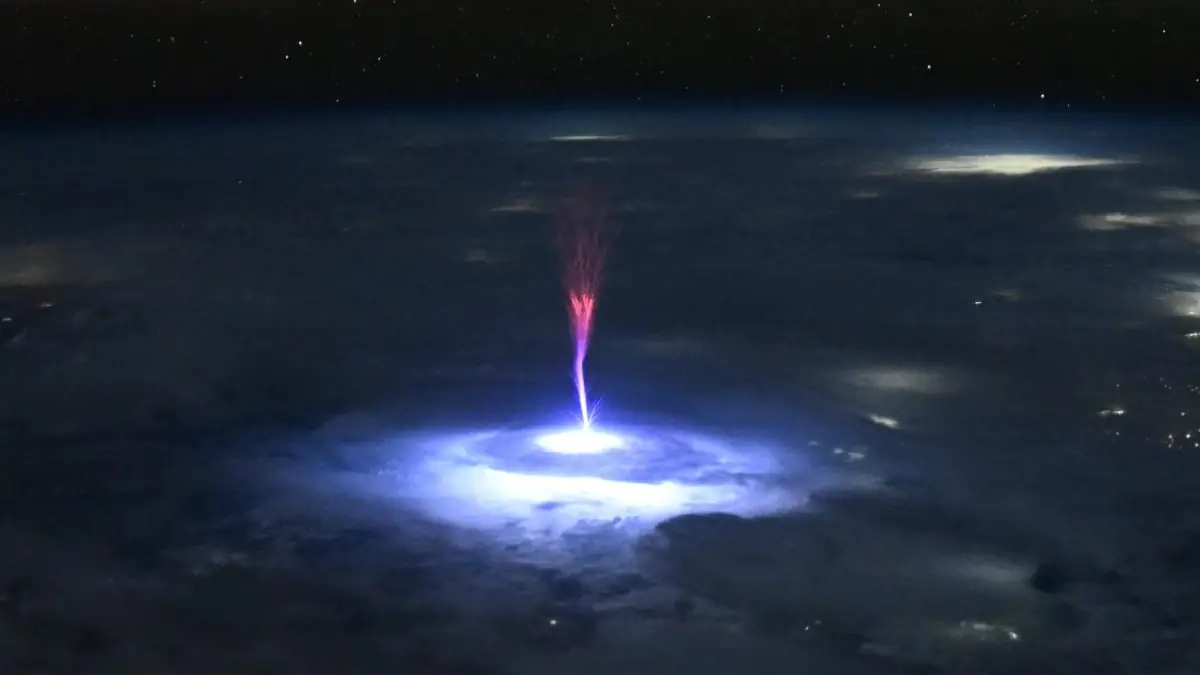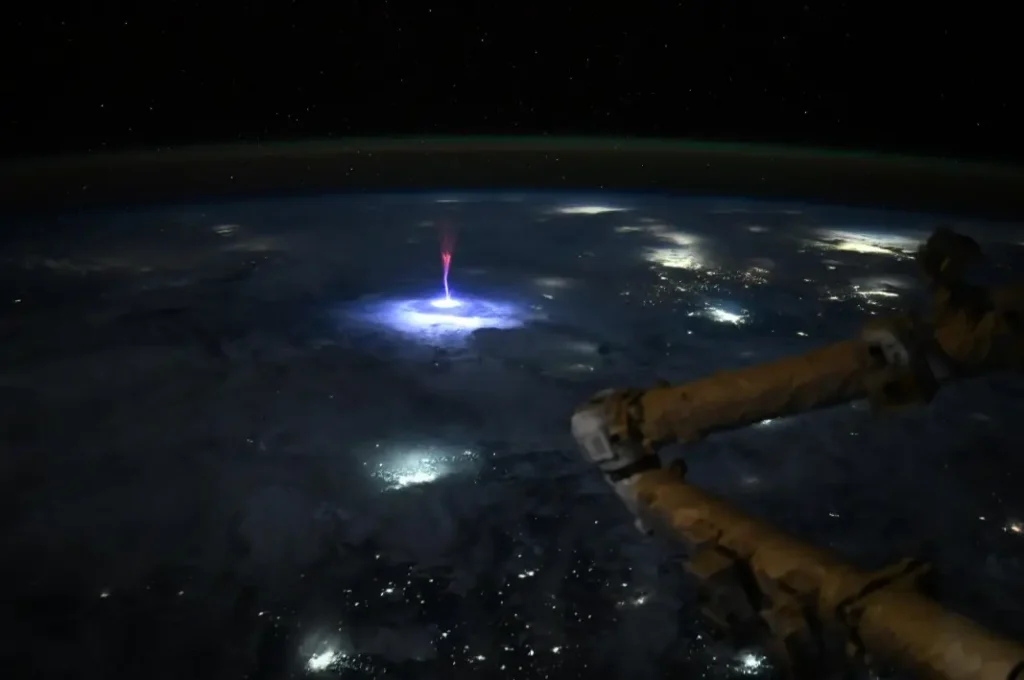Extremely rare gigantic jet captured from the International Space Station over Mexico and U.S. Southwest
An extremely rare gigantic jet, powerful bolt of upward lightning, was captured from the International Space Station as it soared above a thunderstorm over northern Mexico and the U.S. Southwest on July 3, 2025. The striking image, taken by NASA astronaut Nichole Vapor Ayers, shows the jet piercing into the ionosphere, offering a rare glimpse of one of Earth’s most elusive atmospheric phenomena.

Rare gigantic jet observed from the International Space Station over northern Mexico and U.S. Southwest on July 3, 2025. Credit: Nichole "Vapor" Ayers
An extremely rare transient luminous event (TLE) identified as a gigantic jet was observed from the International Space Station (ISS) on July 3, 2025, as the station passed over a large thunderstorm system in northern Mexico and the southwestern United States.
The image, taken by NASA astronaut Nichole Vapor Ayers of the SpaceX Crew‑10 mission, reveals a striking upward discharge, initially believed to be a red sprite but later confirmed by Ayers as a gigantic jet. “Also, turns out, this is a gigantic jet, another type of TLE,” Ayers said. “So cool to learn as we go up here.”
Gigantic jets are rare, powerful forms of high-altitude lightning that connect the tops of thunderstorms to the ionosphere, typically extending from around 15 to 90 km (9 to 56 miles) in altitude. Unlike sprites, which are triggered by electric fields propagating upward, gigantic jets are direct discharges of electrical energy, often appearing as branching, tree-like structures that pierce the upper atmosphere.
Sprites, along with related TLEs such as blue jets, elves, and gigantic jets, have been observed for decades but are rarely observed from the ground due to their fleeting nature and the obscuring effect of storm clouds. The vantage point of the ISS, approximately 400 km (248 miles) above Earth, provides an optimal perspective for direct observation of these high-altitude discharges.
“In this photo, the storm appears to be hovering near the Texas–Mexico border,” Ayers said. “You can spot the glow of Dallas, Austin, San Antonio, and Houston to the northeast, and Torreón, Mexico, to the southwest.”

The shot was taken with a Nikon Z9 using a 50mm lens (f/1.2, ¼ sec, ISO 6400) as part of a time-lapse Ayers set up in the Cupola.

The July 3 event is notable for its clarity and scale. The structure captured displays the classic vertical columns and branching features of a sprite, with initial scientific analysis suggesting the discharge may have reached the upper mesosphere.
The ISS is equipped with specialized instruments such as the European Space Agency’s Atmosphere-Space Interactions Monitor (ASIM), launched in 2018, which records optical, X-ray, and gamma-ray signatures of TLEs. Previous missions, including JEM-GLIMS (Japan) and the ILAN-ES campaign, have recorded hundreds of sprites, elves, and jets, furthering the understanding of the relationship between thunderstorm activity and upper atmospheric electrical events.
Gigantic jets are of scientific interest due to their capacity to transfer charge directly from the troposphere to the lower ionosphere, influencing the electrical structure of the atmosphere. They also emit high-frequency radio waves and may generate short bursts of X-rays or gamma rays, which can momentarily affect the near-Earth radiation environment. These properties make gigantic jets a subject of active study in atmospheric electricity and space weather.
Not all thunderstorms produce gigantic jets, even when strong positive cloud-to-ground lightning is present. The specific atmospheric and electrical conditions required to trigger a jet remain under investigation. Simultaneous observation from space-based sensors, ground-based lightning detection networks, and optical instruments allows researchers to reconstruct the timing, altitude, and spectral characteristics of each event with increasing precision.
Reet is a science journalist and researcher with a keen focus on extreme weather, space phenomena, and climate-related issues. With a strong foundation in astronomy and a history of environmental activism, she approaches every story with a sharp scientific lens and a deep sense of purpose. Driven by a lifelong love for writing, and a curiosity about the universe, Reet brings urgency and insight to some of the most important scientific developments of our time.



Commenting rules and guidelines
We value the thoughts and opinions of our readers and welcome healthy discussions on our website. In order to maintain a respectful and positive community, we ask that all commenters follow these rules.